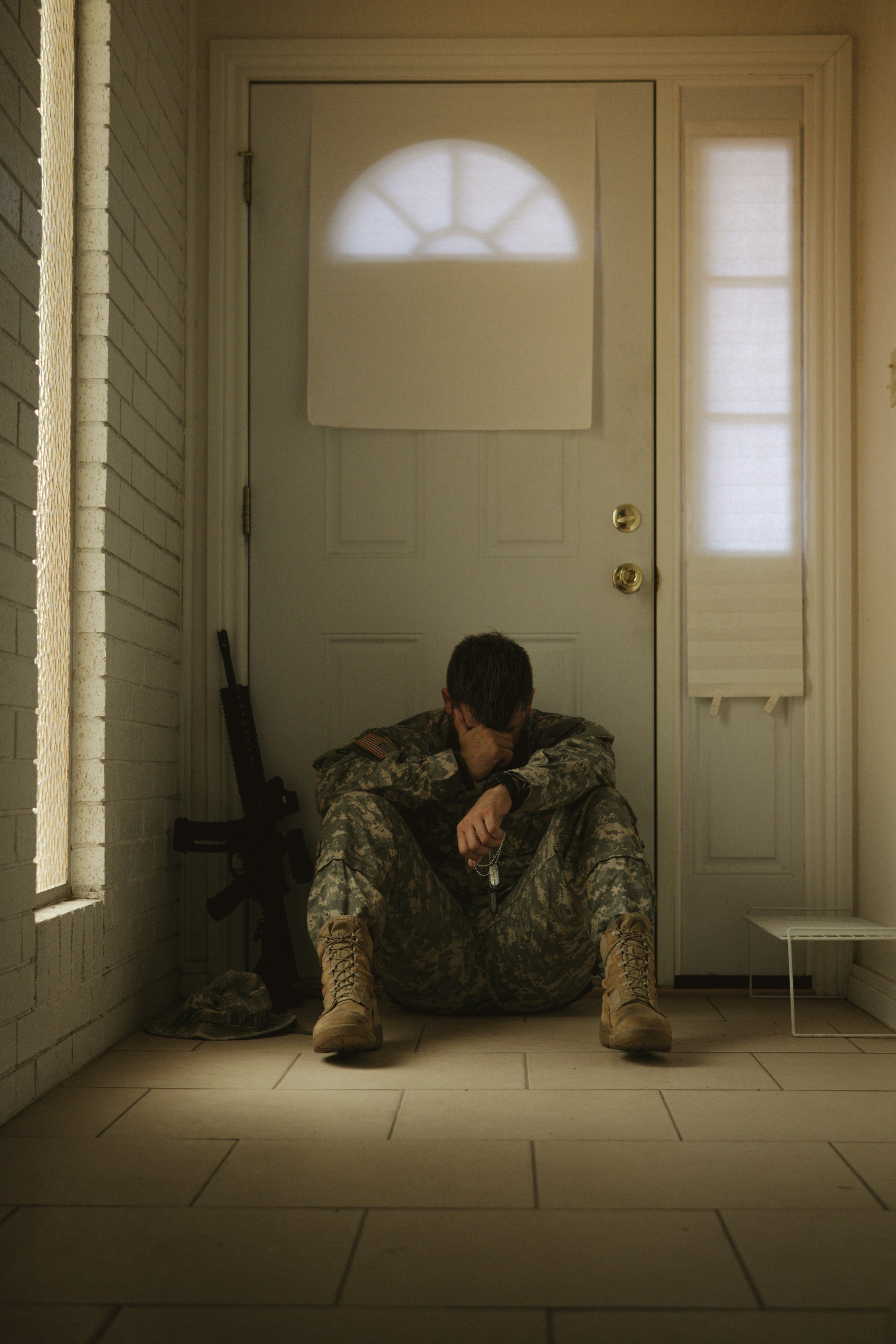This article explains the key differences between C-PTSD and PTSD, highlighting that PTSD often stems from a single traumatic event, while C-PTSD results from prolonged, repeated trauma, leading to more pervasive disruptions in emotional regulation, self-perception, and relationships. It also discusses the symptoms of each, the impact of childhood trauma, and various treatment approaches, emphasizing the importance of professional evaluation for an accurate diagnosis and effective recovery.
In trauma recovery, you’ve likely encountered the terms PTSD and C-PTSD. While both stem from traumatic experiences, understanding the nuanced difference between CPTSD and PTSD is crucial for tailoring your healing journey. Read on to learn more about the differences, offering clarity and guidance as you move forward.
What Is PTSD? Understanding the Basics
Post-traumatic stress disorder (PTSD) is a mental health condition triggered by experiencing or witnessing a terrifying event. These events can range from natural disasters and serious accidents to acts of violence and combat. It’s estimated that approximately 3.5 percent of US adults experience PTSD annually.
PTSD symptoms typically manifest in four key clusters:
- Intrusive thoughts: Recurrent, involuntary memories, distressing dreams, or flashbacks that feel as though the traumatic event is happening again.
- Avoidance: Deliberate efforts to avoid reminders of the trauma, including people, places, and activities.
- Negative mood: Persistent negative thoughts and feelings, such as fear, horror, anger, guilt, or shame.
- Alterations in arousal and reactivity: Irritability, angry outbursts, reckless behavior, hypervigilance, sleep disturbances, and difficulty concentrating.
What Is C-PTSD? Delving into Complex Trauma
What is C-PTSD? Complex PTSD (C-PTSD) arises from prolonged, repeated trauma, often occurring in situations where escape is difficult or impossible. This frequently involves chronic abuse or neglect during childhood, domestic violence, or captivity. Dr. Judith Herman, a pioneer in trauma research, explains that:
“Complex PTSD comes in response to chronic traumatization over the course of months or years, during which the victim is entrapped and conditioned by the perpetrator, in which they face ongoing abuse, exploitation, and terror”.
Is complex PTSD a recognized diagnosis? Yes, complex PTSD is recognized as a distinct diagnosis in the International Classification of Diseases (ICD-11). The ICD-11 criteria include all the core PTSD symptoms plus three additional “disturbances of self-organization/”.
What are the symptoms of complex PTSD? In addition to the PTSD symptoms, C-PTSD includes:
- C-PTSD emotional regulation: Difficulty managing emotions, leading to intense reactions or emotional numbing
- Negative self-concept: Deep-seated feelings of worthlessness, guilt, or shame
- Complex PTSD and relationships: Challenges in forming and maintaining healthy relationships due to trust issues and fear of abandonment
What Is the Difference Between C-PTSD and PTSD?
The core difference between C-PTSD and PTSD lies in the trauma and the resulting impact. While PTSD often stems from a single event, C-PTSD arises from chronic trauma. This chronic exposure leads to more pervasive disruptions in emotional regulation, self-perception, and relationships.
To put it simply, PTSD and complex trauma are related but distinct. Think of PTSD as a wound from a single blow, while C-PTSD is the result of repeated blows that leave deeper, more complex scars.
How is complex PTSD different from PTSD? Here’s a breakdown:
| Feature | PTSD | C-PTSD |
| Root cause | Single traumatic event | Chronic, repeated trauma (often interpersonal) |
| Core symptoms | Intrusive thoughts, avoidance, negative mood, hyperarousal | All PTSD symptoms PLUS emotional dysregulation, negative self-concept, and interpersonal difficulties |
| Impact on self | Primarily affects responses to specific trauma reminders | Profoundly impacts self-perception, emotional regulation, and relationship patterns |
| Chronic trauma vs single event trauma symptoms | Specific triggers, managed with targeted therapies | Pervasive impact, requiring a broader approach to healing |
Can You Have Both C-PTSD and PTSD?
According to the ICD-11, you cannot be diagnosed with both. If you meet the criteria for complex PTSD, it supersedes a PTSD diagnosis. However, it’s important to note that the DSM-5 (Diagnostic and Statistical Manual of Mental Disorders, 5th Edition) does not recognize C-PTSD as a separate diagnosis but includes a dissociative subtype of PTSD, which can encompass some features of C-PTSD.
The Impact of Childhood Trauma
Does C-PTSD relate to childhood trauma? Yes, childhood trauma is a significant risk factor for developing C-PTSD. Trauma experienced during childhood, especially chronic abuse or neglect, can disrupt the development of crucial psychological and neurological systems. This can lead to long-term difficulties in emotional regulation, self-perception, and relationship formation.
Impact of childhood trauma vs single event trauma: Childhood trauma can lead to more pervasive and complex symptoms due to its impact on the developing brain and personality. Single-event trauma, while still deeply impactful, may be more localized in its effects.
C-PTSD vs BPD (Borderline Personality Disorder)
It’s important to differentiate C-PTSD from borderline personality disorder (BPD), as they share some overlapping symptoms. Key distinctions include:
- Self-perception: C-PTSD is characterized by a fixed negative view of self, while BPD involves an alternating sense of self.
- Emotional regulation: BPD often involves intense anger and impulsivity, while C-PTSD may manifest as emotional numbing or withdrawal.
- Relationship patterns: Individuals with BPD may have unstable relationships with alternating idealization and devaluation, while those with C-PTSD may avoid close relationships due to mistrust.
How Do You Diagnose Complex PTSD?
Difference between PTSD and complex PTSD diagnosis: Diagnosis typically involves a thorough clinical assessment, often using tools like the International Trauma Questionnaire (ITQ). The ITQ assesses both PTSD and DSO symptoms, helping clinicians determine if an individual meets the ICD-11 complex PTSD criteria.
Treatments for C-PTSD
What are the treatments for C-PTSD? While traditional PTSD treatments like prolonged exposure (PE) and cognitive processing therapy (CPT) can be effective, C-PTSD often requires a more comprehensive approach. A phase-oriented treatment model, focusing on safety, remembrance and mourning, and reconnection, is often recommended.
Neurobiological Foundations of Trauma
Recent research highlights that trauma exposure can physically change the brain, particularly the salience network, which is crucial for learning and survival. These changes can affect threat assessment and emotional processing. Understanding these neurobiological changes can inform more targeted and effective treatments.
Taking the Next Step
Understanding the difference between C-PTSD and PTSD is a vital step in your healing journey. If you suspect you may have C-PTSD, seeking a diagnosis from a qualified mental health professional is crucial. Remember, effective treatments are available, and recovery is possible.
Actionable Steps
- Seek a professional evaluation: Consult a therapist specializing in trauma to receive an accurate diagnosis.
- Explore treatment options: Discuss potential treatment approaches, including phase-oriented therapy, EMDR, or traditional PTSD treatments.
- Build a support system: Connect with support groups or online communities to share experiences and gain encouragement.
- Practice self-care: Prioritize activities that promote emotional well-=being, such as mindfulness, exercise, and creative expression.
Your healing journey is unique. By understanding the nuances of C-PTSD and PTSD, you can empower yourself to seek the most effective support and embark on a path toward recovery and wellbeing.
If you or someone you know is struggling with the aftereffects of trauma or active substance abuse, Mountainside can help. We offer individualized treatment for recovery, including the full spectrum of treatment for co-occurring disorders. Speak to an admissions specialist today to see what your options are.
If you or a loved one is struggling with addiction, Mountainside can help.
Click here or call (888) 833-4676 to speak with one of our addiction treatment experts.

 By
By 







